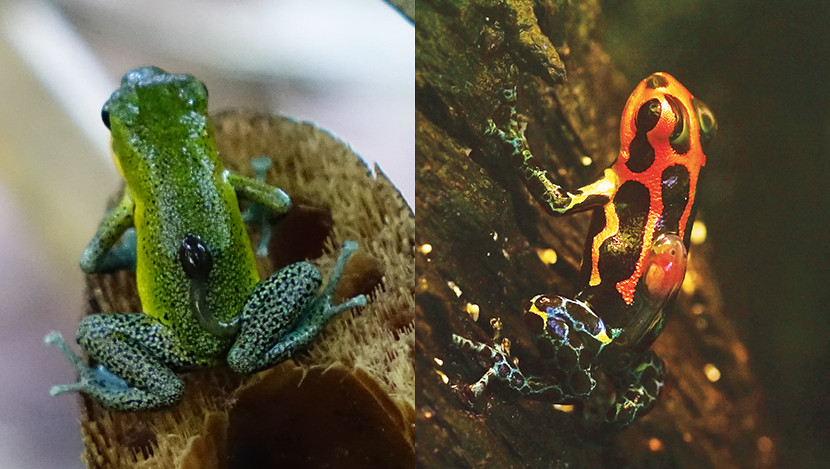Why are some animals committed to their mates and others are not? A team of international scientists, including researchers from the Milner Centre for Evolution at the University of Bath, have discovered that evolution has used a kind of universal formula for turning non-monogamous species into monogamous species — turning up the activity of some genes and turning down others in the brain.
A new study, led by The University of Texas at Austin, looked at the genetics of 10 species of vertebrates spanning 450 million years of evolution. It is published in the journal Proceedings of the National Academy of Sciences.
The researchers studied five pairs of closely related species – four mammals, two birds, two frogs and two fish — each with one monogamous and one non-monogamous member. These five pairs represent five times in the evolution of vertebrates that monogamy independently arose, such as when the non-monogamous meadow voles and their close relatives the monogamous prairie voles diverged into two separate species.
The authors define monogamy in animals as forming a pair bond with one mate for at least one mating season, sharing at least some of the work of raising offspring and defending young together from predators and other hazards. Researchers still consider animals monogamous if they occasionally mate with another.
The researchers compared gene expression in male brains of all 10 species to determine what changes occurred in each of the evolutionary transitions linked to the closely related animals. Despite the complexity of monogamy as a behaviour, they found that the same changes in gene expression occurred each time. The finding suggests a level of order in how complex social behaviours come about through the way that genes are expressed in the brain.
Arranging genes from distantly related species — such as a fish and a mammal — into groups based on sequence similarities, the team was able to identify a common evolutionary formula that led to pair bonds and co-parenting in the five species that behave monogamously.
This study covers a broader span of evolutionary time than had been explored previously. Other studies have looked at genetic differences related to evolutionary transitions to new traits, but they typically focus on animals separated by, at most, tens of millions of years of evolution, as opposed to the hundreds of millions of years examined with this study.
"Most people wouldn't expect that across 450 million years, transitions to such complex behaviours would happen the same way every time," said Rebecca Young, research associate in UT Austin's Department of Integrative Biology and first author of the study.
Dr Araxi Urrutia, Senior Lecturer in Evolution at the Milner Centre for Evolution at the University of Bath, said: “This study shows that there is a set of genes which have repeatedly changed in their activity levels in the male brain in lineages which have evolved a monogamous mating system”
Other authors on the paper from the Milner Centre for Evolution were Professor Tamás Székely and Dr Nina Ockendon-Powell (currently at the University of Bristol).
Additional authors at other institutions are Hans Hofmann and Steven Phelps (The University of Texas at Austin) Michael Ferkin (University of Memphis), Veronica Orr (University of California, Davis), Ákos Pogány (Eötvös Loránd University), Corinne Richards-Zawacki (University of Pittsburgh), Kyle Summers (East Carolina University), Brian Trainor (University of California, Davis), Gergely Zachar (Semmelweis University) and Lauren O'Connell, a former UT Austin graduate student (Stanford University).
This work was supported by the Alfred P. Sloan Foundation, the National Science Foundation, the National Institutes of Health and the Hungarian Scientific Research Fund.

